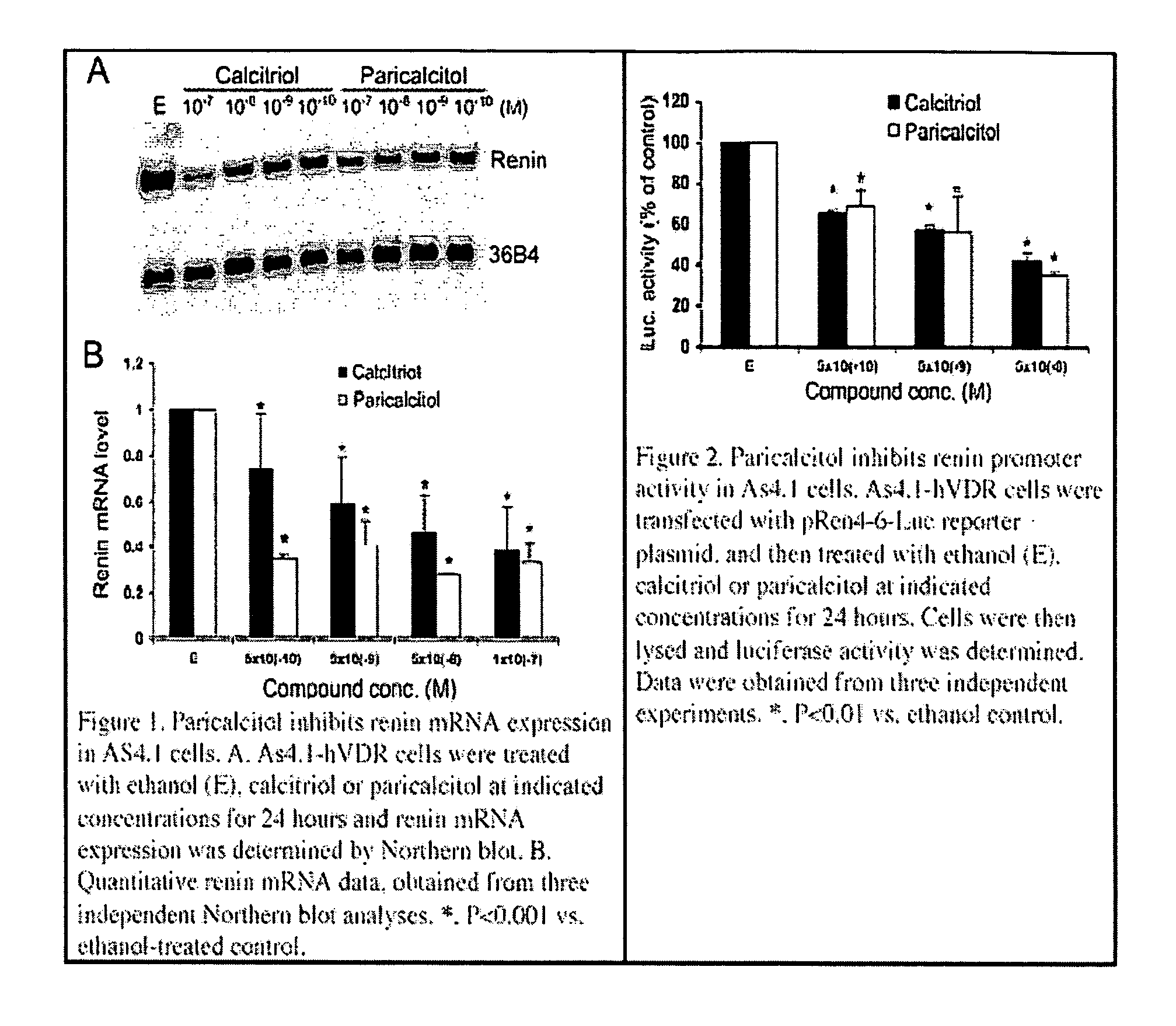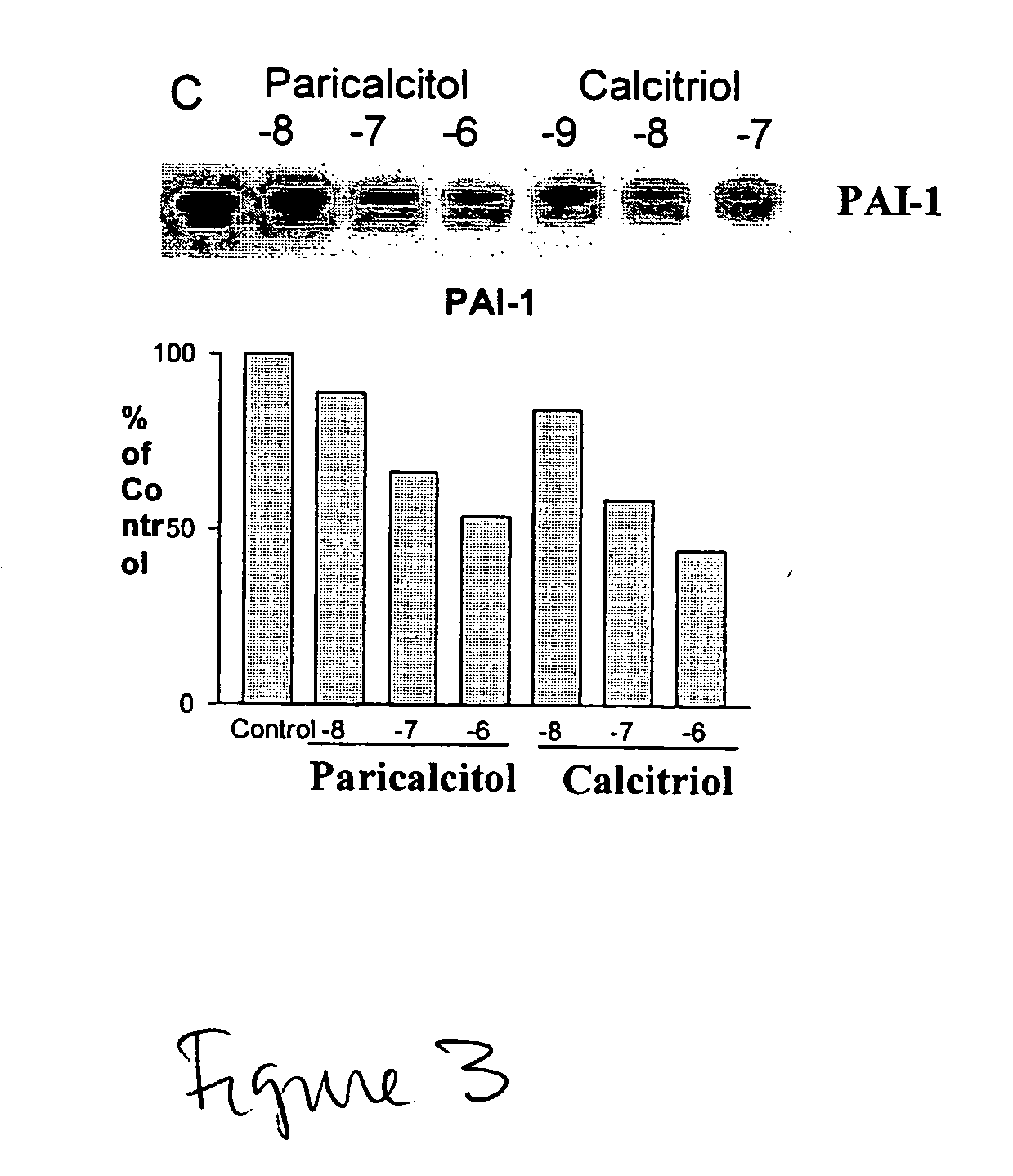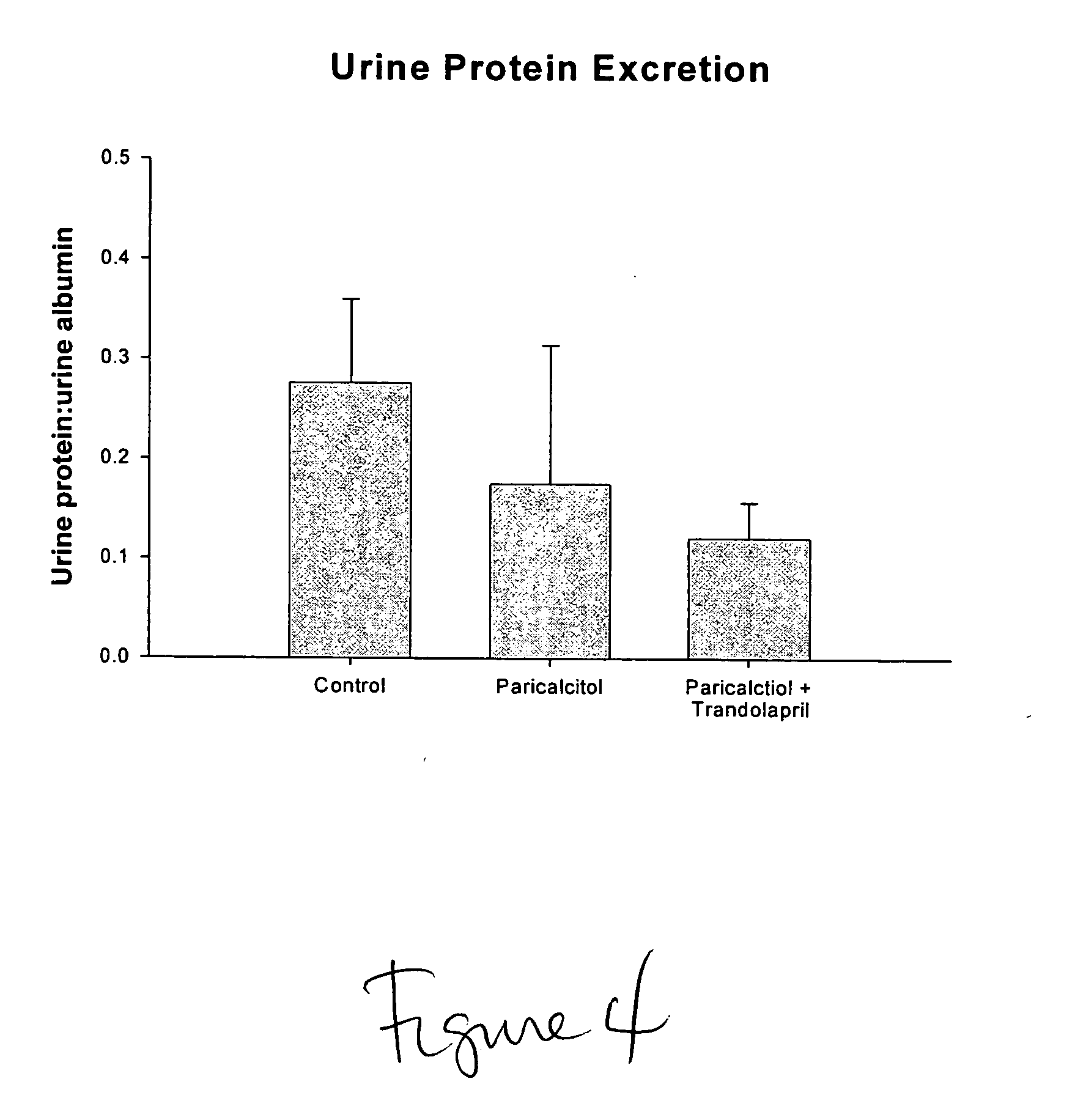Use of vitamin Ds to treat kidney disease
a technology of vitamin d and kidney disease, applied in the direction of drug composition, biocide, bandages, etc., can solve the problems of nephron loss, substantial burden on the health care system, and the care of patients with esrd already consumes more than $18 billion per year, so as to reduce the inflammatory process, prevent glomerular and tubular interstitial fibrosis, and reduce the proliferation of mesangial cells
- Summary
- Abstract
- Description
- Claims
- Application Information
AI Technical Summary
Benefits of technology
Problems solved by technology
Method used
Image
Examples
example 1
Activity of Paricalcitol to Suppress Renin Expression
[0046] Recently, it has been found that 1,25-dihydroxyvitamin D functions as a negative regulator of renin biosynthesis in vitro and in in vivo studies. Calcitriol is able to inhibit renin gene expression, which provides a molecular basis to explore the use of vitamin D and vitamin D analogs as new renin inhibitor to regulate rennin-angiotensin-aldosterone system (RAAS).
[0047] Using an in vitro cell culture system, the activity of paricalcitol to suppress renin gene expression was examined using previously published techniques (1,25-Dihydroxyvitamin D3 is a negative endocrine regulator of the renin-angiotensin system, J. Clin. Invest., July 2002). As shown in FIG. 1, by Northern blot analysis, paricalcitol treatment of As4.1-hVDR cells dose-dependently inhibits renin mRNA expression. In fact, its renin-inhibiting activity appears a bit more potent than calcitriol (FIGS. 1A and B). This inhibitory effect is confirmed by renin pro...
example 2
Effect of VDR Activators on PAI-1
[0048] The effect of paricalcitol and calcitriol on PAI-1 in primary culture of human coronary artery smooth muscle cells was investigated. (See FIG. 4.) PAI-1 (plasminogen activator inhibitor type-1) is one of the risk markers for coronary heart disease, and is enhanced in atherosclerotic plague and colocalized with macrophages. Human coronary artery smooth muscle cells were incubated with paricalcitol or calcitriol at the indicated concentration for 24 hr at 37° C. Samples were solubilized in SDS-PAGE sample buffer, and the protein content in each sample was determined by the Bio-Rad dye-binding protein assay. Samples were resolved by SDS-PAGE using a 4-12% gel, and proteins were electrophoretically transferred to PVDF membrane for Western blotting.
[0049] The membrane was blotted for 1 h at 25° C. with 5% nonfat dry milk in PBS-T and then incubated with a mouse anti-PAI-1 monoclonal antibody in PBS-T overnight at 4° C. The membrane was washed wit...
example 3
Effect of VDR Activator Alone and in Combination with ACEI, on Nephropathy in Rodent Model of CKD
[0053] Using the ApoE KO mouse after uninephrectomy, which is an accepted model of CVD and CKD, the effect of paricalcitol and trandolapril to treat and to delay progression of kidney disease was examined. Animals received daily subcutaneous paricalcitol (30 mg / 100 g body weight) or paricalcitol (30 mg / 100 g body weight)+trandolapril (1 mg / kg) for 12 weeks. Proteinuria or albuminuria are established risk factors for progressive loss of kidney function. Since urinary protein excretion correlates with kidney damage, at the end of the 12 week treatment period mice were placed in metabolic cages for measurement of 48-hr urine albumin and creatinine excretion by ELISA assays. Urinary albumin excretion is expressed as mg albumin / mg creatinine.
[0054]FIG. 5 provides the results for urinary albumin excretion, represented as a ratio to urinary creatinine excretion. These results show that parica...
PUM
 Login to View More
Login to View More Abstract
Description
Claims
Application Information
 Login to View More
Login to View More - R&D
- Intellectual Property
- Life Sciences
- Materials
- Tech Scout
- Unparalleled Data Quality
- Higher Quality Content
- 60% Fewer Hallucinations
Browse by: Latest US Patents, China's latest patents, Technical Efficacy Thesaurus, Application Domain, Technology Topic, Popular Technical Reports.
© 2025 PatSnap. All rights reserved.Legal|Privacy policy|Modern Slavery Act Transparency Statement|Sitemap|About US| Contact US: help@patsnap.com



